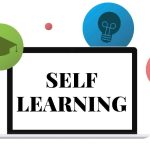Introduction
Everyone wants to get their dream job and works hard to achieve it. But not everyone gets their dream job easily. To get your dream job, you have to do a lot of things, and a person becomes successful only when they have the right skills. The job market is competitive, and simply wanting a dream job is not enough. To stand out and succeed, you need to develop the right skills that employers are looking for. Success comes to those who continuously learn and improve themselves. That’s why up-skill for your dream job —learning new skills or improving existing ones—is essential. If you want to achieve your dream job, focusing on upskilling is a must. Read this carefully to understand how you can prepare yourself effectively.
Understanding Your Dream Job
First, it’s important to understand what a dream job is. The meaning of a dream job is different for everyone. Someone decides their dream job according to the salary package, their dream job according to their passion, or their work-life balance.
How to decide?
- First, you need to know your interests. What is the thing you love doing?
- What are your strengths? Think about what you can do better writing, problem-solving, communication.
- Which values are important for you security, creativity, independence, and social impact?
- What type of work do you want? Remote work, full-time work, part-time work, or travel opportunities.
Example: if you love writing and want to work remotely and creativity is important for you, then your dream job can be a ‘freelance content writer’.
How to define what your “dream job” really is
In this stage, you create a clear picture of your dream job.
- Create a job title list. Write all the job titles that interest you, such as digital marketer, content writer, influencer, or graphic designer.
- Think about what is the one thing that you will love doing every day. Example writing, designing, coding, or client handling.
- See the scope in that field.
- Compare your financial goals. See if it matches your income expectations or not.
At the time of defining your dream job, your priority should be your interest more than your salary expectations.
Researching job descriptions to find skill gaps
Now that you have understood what your dream job is, your next step would be researching the job description.
How to research?
- Search on job portals: Check the job descriptions for your desired role on LinkedIn, Indeed, Glassdoor, and Naukri.com.
- List common requirements: Note down the skills and qualifications that appear repeatedly in different job posts.
- Compare with your skills: Tick the skills you already have and list the ones you are missing separately.
- Prioritize skill gaps: Learn the most in-demand skills first.
How to Up-skill for Your Dream job?
1. Identifying Skill Gaps
Identifying Skill Gaps
Skill gaps mean the difference between the skills you currently have and the skills required for your dream job. To identify these gaps, research job descriptions, conduct a self-assessment of your skills, and seek feedback from industry professionals. Once you know which skills are missing, you can create a targeted learning plan to become fully prepared for your dream job.
Tools and platforms for skill gap analysis (LinkedIn Skills Assessment, Coursera, etc.)
Skill gap analysis means comparing your existing skills with the skills required for your desired job.
There are some helpful tools to analyse the skill gap.
- LinkedIn skills assessment
LinkedIn has a skill section in which you can give your online assessment, which includes MCQs. If you clear that online assessment, then you can see a ‘Verified Skill Badge’ on your profile. - Coursera
Coursera is an online learning platform that provides courses from the world’s best universities and companies.
You can do job role-specific courses to fill their skill gaps. For example, if you are preparing for a digital marketing role and you don’t have skill of Google Analytics, then you don’t have to worry, you just have to go on a coursera and take the online course on Google Analytics, and you will be done with the digital marketing role. - Other platforms
There are many more platforms like Best Job Tool, Udemy, Skillshare, and LinkedIn learning, with the help of these platforms, you can also fill your skill gaps.
Talking to professionals in your target industry.
“Job market’s real picture isn’t just from job descriptions – industry professionals can tell you the practical requirements.”
How?
- LinkedIn networking
Connect with a professional with your targeted role. Message them politely to ask which skills are more useful in the field. - Informal interviews
Arrange a short online meeting where you would be asking about the career path and skill requirements. - Industry event
Attend industry events and seminars to know about the industry in detail and in person.
With these, you will understand which tools and software, soft skills are used why they are used in the actual work
2. Choosing the Right Skills to Learn
When selecting skills to learn, focus on those that align with your dream job’s requirements and your personal strengths. Maintain a balance between hard skills (technical, job-specific abilities) and soft skills (communication, problem-solving, teamwork). Research industry trends to identify which skills are in high demand now and in the future. Prioritize learning skills that will have the most impact on your employability and career growth. Continuously update your skills to stay competitive in the evolving job market.
Hard skills vs soft skills for your chosen career
| Basis | Hard Skills | Soft Skills |
| Definition | These are technical, measurable skills, which you learn by through training, courses, or from direct work experience. | These are personal traits and interpersonal abilities. It defines by your style of work and interaction with someone. |
| Examples | Coding, Graphic Design, Data Analysis, SEO, Accounting, Foreign Languages. | Communication, Problem-Solving, Time Management, Teamwork, Leadership, Emotional Intelligence. |
| Importance | Hard skills are directly job-related and are clearly mentioned in job descriptions. Recruiters can verify them through tests, assignments, or certifications. | Soft skills help you adapt, collaborate, and work efficiently. They are in demand in every industry, whether the role is technical or non-technical. |
Both the hard skills and the soft skills are equally important for our career growth.
Emerging skills in 2025 job market
In 2025, job market is changing rapidly because of the AI, automation, and remote work trend. Some skills demand are growing day by day such as;
a) Technology & Data Skills
- AI & Machine Learning Basics
- Data Analytics & Visualization
- Cybersecurity Awareness
- Cloud Computing
- Automation Tools (Zapier, Power Automate)
b) Digital Communication Skills
- Remote Collaboration Tools (Notion, Trello, Slack) ka use
- Social Media Management
- Online Presentation and Public Speaking
c) Creative & Problem-Solving Skills
- Design Thinking
- Creative Content Creation
- Critical Thinking & Decision Making
3. Learning Methods for Upskilling
Now there are multiple methods for upskilling, candidates have variety of choices of tools and platforms. They can learn skills from the platform, which makes them comfortable. There are also many courses available.
Online courses, certifications, and workshops.
- Online course
With platforms like Coursera, Udemy, LinkedIn Learning, and Skillshare, you can learn skills anytime and anywhere. Here you can find courses from beginner to experience level. - Certification
A certificate from recognized institutions adds value to your profile. Like a Google Analytics certificate or a Microsoft Excel certificate, prove your expertise. - Workshop
Workshops are short-term interactive sessions where you can directly learn practical skills from experts. It’s also very useful for networking.
On-the-job learning and volunteering.
Learning new skills while doing your current job — such as shadowing a senior, working on cross-department projects, or experimenting with new tools.
Volunteering: Taking unpaid roles or community projects in your field of interest, which helps you gain real-world experience and apply your skills practically. It also strengthens your portfolio and network.
Benefit: Real-world application of skills, practical exposure, and building industry connections — without always spending money on formal training.
4. Using Technology to Upskill Faster
In today’s time, technology boost the speed of learning. AI tools, ChatGPT, Grammerly, and Canva like tools help to improve content, generate creative ideas, and help in understanding concept easily. Upskilling has very easy with technology.
AI tools, learning apps, and skill-building platforms
In today’s time, technology can boost your learning speed.
- AI tools
With the help of ChatGPT, Grammarly, and the Canva tool, we can improve writing, generate creative ideas, and understand concepts easily. - Learning app
Duolingo (language learning), Khan Academy (academic concepts), and Blinkist (book summaries) provide short, easy, and interactive learning. - Skill-building platform
On Coursera, Udemy, LinkedIn Learning, and Skillshare platforms, we can learn directly from experts, at our own pace, anytime and anywhere.
By using tech tools, you can make your learning process personalized and faster, which will help you prepare for your dream job more quickly.
5. Networking as Part to Up-skill Easily
Networking plays a crucial role in your upskilling journey because it connects learning with real-world opportunities. By joining professional communities, attending industry conferences, webinars, and workshops, and actively engaging with experts in your field, you gain insights into current trends, in-demand skills, and practical applications. These interactions often lead to mentorship, valuable career advice, and even job referrals. Networking also allows you to discuss your newly acquired skills, showcase your expertise, and collaborate on projects, which further enhances your portfolio. In short, networking bridges the gap between skill-building and career advancement, helping you grow faster and more effectively.
Joining professional communities and events.
Becoming part of professional communities—both online and offline—helps you connect with people in your industry, exchange ideas, and stay updated on the latest trends. Attending events such as conferences, seminars, and workshops allows you to learn from experts, discover new opportunities, and build relationships that can support your career growth. These connections often provide insights and mentorship that go beyond what you can learn from courses alone
6. Applying Your Skills Before Landing the Dream Job
Before getting job, you should try to apply your skills in real world to gain experience. Freelance projects, internships, or side hustle like writing blog can give you practical exposure, build confidence, and make you market ready which impresses future employer.
Freelance projects and internships to up-skill
Projects or internships give you the opportunity to work with real clients. This helps you understand industry standards, meet deadlines, and develop professional communication skills. You can also add strong work samples to your portfolio, which can impress future employers.
Side hustles to practice to up-skill
Side hustles like writing a blog, running a YouTube channel, or managing social media for a small business allow you to practice your skills in a practical setting. They boost your confidence and make you market-ready.
Tip: Don’t wait for a job — applying your skills in the real world can fast-track your learning process.
Conclusion
Upskilling is not just about adding new abilities to your resume—it’s about staying relevant, competitive, and confident in a fast-changing job market. By clearly identifying your dream job, analyzing skill gaps, choosing the right mix of hard and soft skills, and using modern learning methods, you can strategically prepare for career success. Leveraging technology, networking with industry professionals, and applying your skills through freelance projects or side hustles can accelerate your growth. The key is to keep learning continuously and adapting to emerging trends. When you actively invest in your personal and professional growth, you move closer to your dream job every day.
Upskilling and networking go hand in hand when it comes to achieving your dream job. While upskilling equips you with the latest hard and soft skills required in your industry, networking helps you showcase those skills to the right people. By joining professional communities, attending industry events, and connecting with experienced professionals, you gain valuable insights into emerging trends and in-demand abilities. These connections can lead to mentorship, job referrals, or collaborative projects that strengthen your portfolio. When you combine continuous learning with strong professional relationships, you not only improve your capabilities but also open doors to career opportunities faster.
You can read my detailed article on Networking Strategies for Job Seekers to learn how building the right connections can complement your upskilling journey.







Comments
Leave a Comment